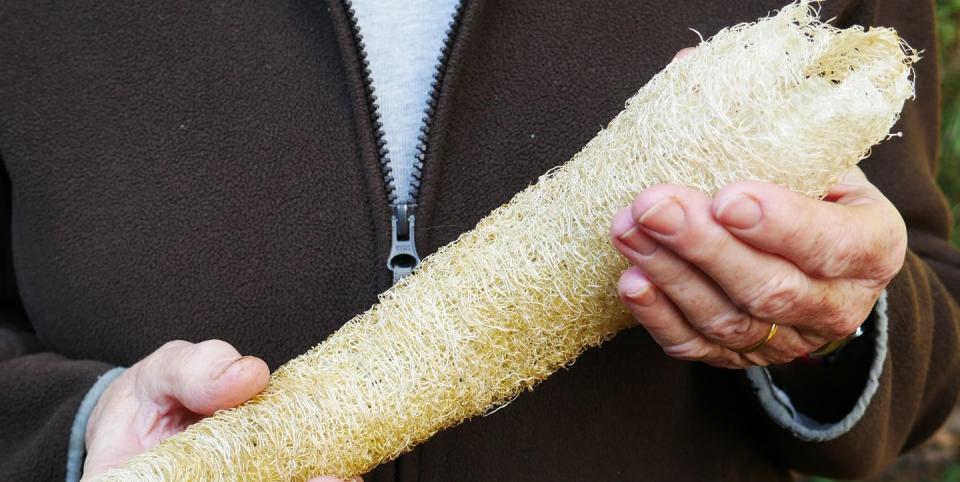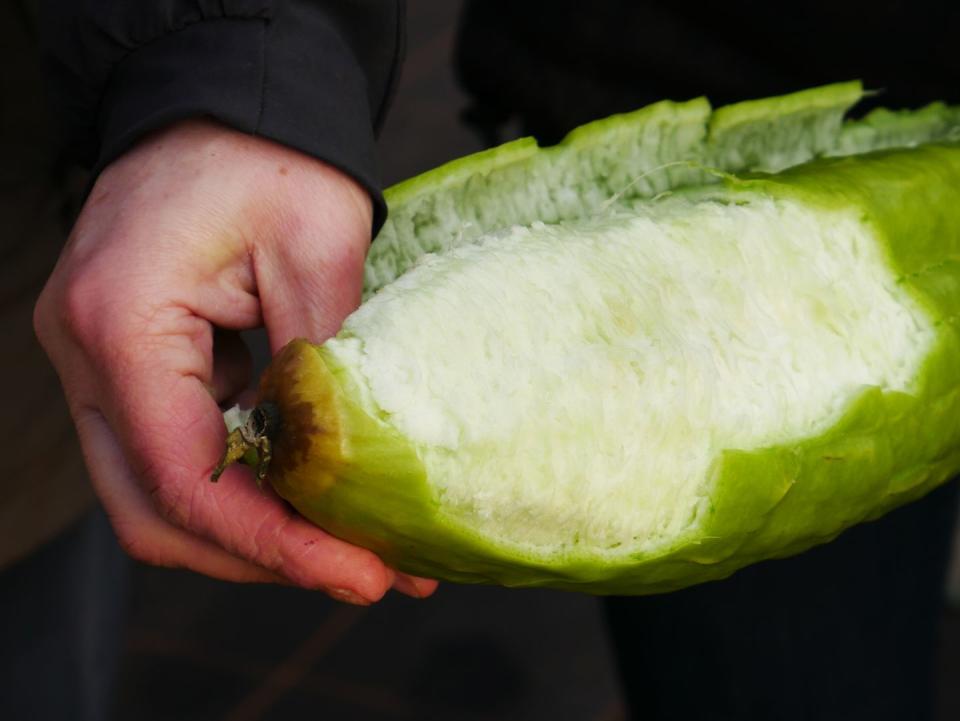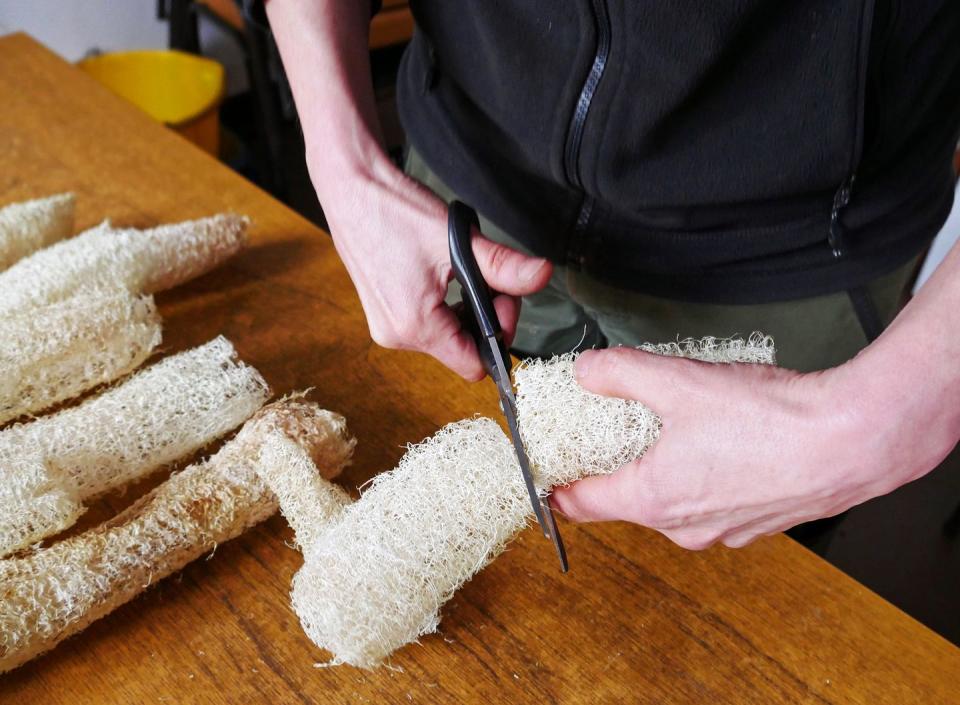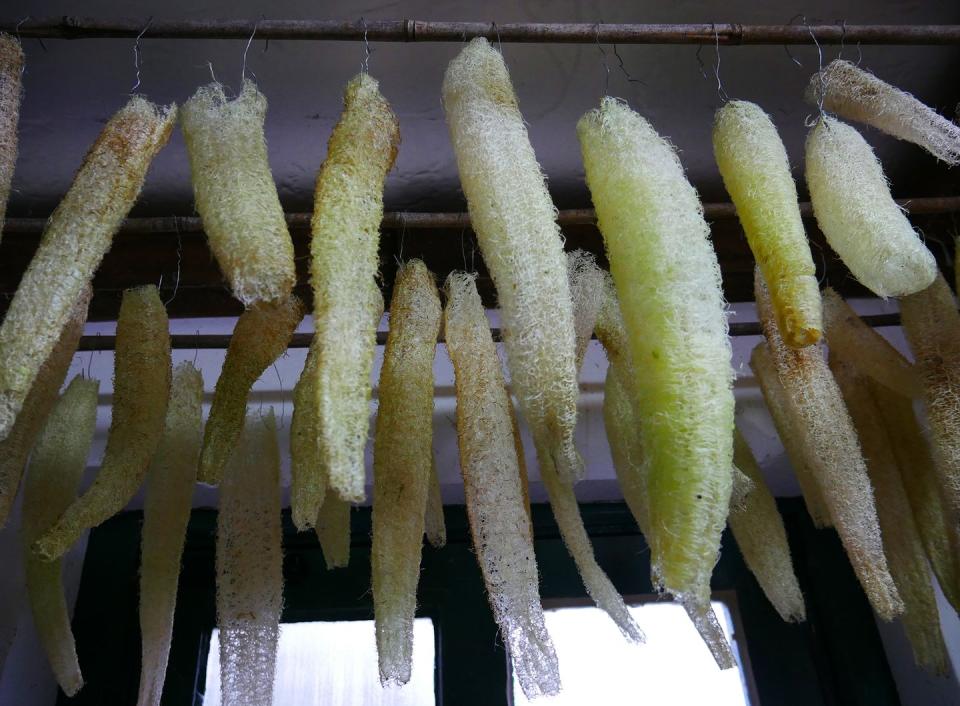People are taking plastic-free up a notch and growing their own kitchen sponges from courgettes

In a bid to reduce plastic waste, the National Trust has been, rather incredibly, growing their own kitchen sponges, using courgettes.
The team at the National Trust’s Knightshayes estate in Devon recently harvested their first crop of loofahs. The staff and volunteers are now using the plant-based, organic and biodegradable 'sponges' to do the washing-up, saving them from buying plastic or cloth kitchen pads and scourers.

The team is run by kitchen garden supervisor Bev Todd, who oversaw the planting and growing stages of the 30 fruits that made the first batch of loofahs.
“Many people think loofahs are sea sponges but they’re actually the fruit of Luffa cylindrica, a vine in the cucumber family," explains Bev. "Once they’ve matured, a few simple steps turns them into sponges that are great for cleaning dishes.

“We have 80 volunteers and nine staff in our outdoor team, so that’s a lot of washing up and a lot of sponges. With the growing awareness of single-use plastics, and their impact on the environment, we wanted to find a more sustainable alternative to the disposable plastic-based sponges we had been using.”
The plan is for Bev and the team to continue growing the sponges and sell any surplus in the online National Trust shop.

Feeling inspired? Bev has shared the step-by-step process of growing loofahs so you can try it at home.
How to grow your own loofahs
“You need to grow them up some kind of supporting structure, but there’s nothing more complicated than that involved. You simply grow them as you would grow courgettes,” says Bev.
Sow seeds in April or May in a warm, sunny spot. A sunny windowsill or frost-free greenhouse is perfect.
Transfer to a large pot under cover (in a greenhouse or similar) for growing on. Fruit won’t achieve ripeness outdoors.
Ensure plants have a support they can scramble up.
Once the fruit has matured and withered, squeeze to loosen the skin and then peel skin off completely to reveal the fibrous inner ‘skeleton’.
Wash the peeled fruit well to remove the seeds and flesh from the ‘skeleton’ and hang to dry.
Like this article? Sign up to our newsletter to get more articles like this delivered straight to your inbox.
You Might Also Like

 Yahoo News
Yahoo News 